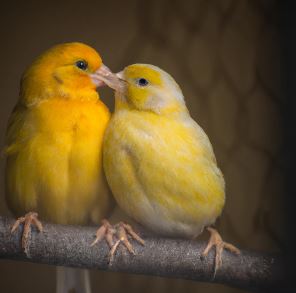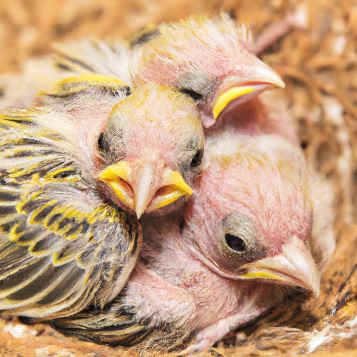All About Breeding Canaries
You’ve come to the right place for a starter course on all about breeding canaries.

Welcome to "All About Breeding Canaries," your comprehensive guide to the fascinating world of canary breeding.
Whether you're a novice enthusiast or a seasoned breeder, this website is your go-to resource for everything related to breeding these charming birds. From selecting breeding pairs to managing nests and caring for chicks, we cover every aspect of the breeding process in detail.
Our expert tips, informative articles, and practical advice will help you navigate the intricacies of canary breeding successfully.
Get ready to embark on an enriching journey as we delve into the art and science of breeding these delightful avian companions.
There is more to it than most people realize but...on the other hand...it doesn't have to be difficult or time consuming. As a matter of fact...it can be downright enjoyable.
All About Breeding Canaries
Breeding canaries is not only a fulfilling hobby but also a rewarding endeavor that allows enthusiasts to witness the marvels of nature up close.
Whether you're a beginner or an experienced breeder, understanding the intricacies of canary breeding is essential for success. In this comprehensive guide, we will explore everything you need to know about breeding canaries, from selecting breeding pairs to caring for chicks.
Why breed canaries? Breeding canaries is a rewarding and possibly profitable past-time.
1. You can take your canaries to bird shows and compete for song, color, and composition.
2. You can sell your canaries for profit.
3. Or you can just breed canaries for fun and enjoy their company and beautiful singing voices.
Click here...to learn more great reasons to breed canaries
Choosing Breeding Stock
Selecting the right breeding stock is the foundation of successful canary breeding.
When choosing breeding pairs, consider factors such as age, health, and temperament. Opt for birds that are at least one year old, as they are sexually mature and more likely to produce viable offspring.
Additionally, ensure that both male and female birds are in optimal health, free from any signs of illness or genetic defects.
Temperament is another crucial consideration when selecting breeding pairs. Some hens will simply refuse to breed with certain males.
Choose birds with compatible personalities to minimize aggression and ensure harmonious breeding conditions. Observing the behavior of potential breeding pairs can provide valuable insights into their compatibility and likelihood of successful breeding.
Canary Breeding Environment
Creating the right breeding environment is essential for encouraging successful breeding behavior in canaries.
Begin by setting up a spacious breeding cage or aviary that provides ample space for nesting and courtship activities. Ensure that the cage is equipped with nesting materials such as nesting boxes, coconut fiber, or shredded paper to provide a comfortable nesting environment for the birds.
Maintain a stable and conducive environment for breeding by regulating temperature and humidity levels. Canaries thrive in moderate temperatures ranging from 65 to 75 degrees Fahrenheit and require humidity levels between 40% to 60%.
Additionally, provide adequate lighting to simulate natural daylight cycles, which play a crucial role in stimulating breeding behavior.
BREEDING CAGES
Courtship and Mating
Once the breeding environment is established, observe the courtship behaviors of the breeding pair closely.
Male canaries typically display courtship behavior by singing, fluffing their feathers, and performing elaborate courtship dances to attract the female's attention.
The female canary may respond to the male's advances by fluttering her wings and vocalizing softly.
During the courtship phase, ensure that the breeding pair has privacy and minimal disturbance to encourage bonding and mating.
Once courtship behaviors are observed, mating usually occurs shortly thereafter. Male canaries will mount the female from behind, and mating typically lasts for a few seconds to a minute.
Additionally, be sure to provide optimal canary specific nutrition at this time.
Canary Nesting and Egg Laying
After mating, the female canary will begin preparing the nest for egg laying.
Provide the breeding pair with a suitable canary nest and nesting materials, such as coconut fiber or nesting felt, to facilitate nest-building.
Female canaries typically lay one egg per day, or every 2nd day, until they have completed their clutch, which typically consists of four to six eggs.
Monitor the nesting behavior of the female canary closely, as improper nesting or egg laying behavior may indicate underlying health issues or environmental stressors.
Ensure that the nesting materials are kept clean and dry to prevent the growth of bacteria and mold, which can compromise the health of the eggs and chicks.
Egg Incubation and Hatching
Once the female canary has completed laying her clutch of eggs, she will begin incubating them to facilitate hatching.
Female canaries typically start incubating the eggs after laying the second or third egg and will spend the majority of their time sitting on the eggs to keep them warm and protected. Condition of eggs is important when learning all about breeding canaries.
The incubation period for canary eggs typically lasts between 13 to 14 days, during which the female canary will diligently tend to the eggs, ensuring optimal conditions for embryo development.
Monitor the nesting and cage area closely during this time, ensuring that the temperature and humidity levels remain stable to support successful egg development.

Caring for Chicks
After the eggs have hatched, the female canary will continue to care for the chicks, providing them with warmth, protection, and nourishment.
Newly hatched chicks are fragile and require attentive care to ensure their survival. Ensure that the nest and the area under the nest is equipped with soft bedding material to cushion the chicks and prevent injury.
The female canary will feed the chicks a regurgitated mixture of seeds and crop milk, providing them with essential nutrients for growth and development.The male may also join in.
Monitor the feeding behavior of the female canary closely, ensuring that all baby canaries are receiving adequate nourishment.
Additionally, maintain a clean and hygienic environment in the cage to prevent the spread of disease and infection.
Weaning and Fledging
As the chicks grow, they will gradually transition from being dependent on their parents for food to feeding themselves.
This process, known as weaning, typically occurs around 3 to 4 weeks of age, depending on the individual development of the chicks. Provide the parents and the chicks with a varied diet of seeds, fruits, egg food, and vegetables to encourage healthy growth and development.
Once the chicks have fully fledged and are capable of independent flight, they can be safely removed from the nesting box and housed in a separate cage. Monitor the behavior of the fledgling chicks closely, ensuring that they are eating and drinking adequately and adapting well to their new environment.
Joy of Breeding Canaries
Breeding canaries is a deeply rewarding experience that allows enthusiasts to witness the miracle of life unfold before their eyes.
By understanding the key principles of canary breeding and providing optimal care and attention to breeding pairs and chicks, enthusiasts can enjoy successful breeding outcomes and contribute to the preservation of these beloved avian companions.
With patience, dedication, and a genuine love for these beautiful birds, anyone can embark on a fulfilling journey into the world of canary breeding.
As you learn all about breeding canaries you’ll want to know how to care for your breeding canaries and their babies...
--feeding
--temperature control
--lighting
--nests and nesting materials
--health care and disease control
--watching for problems
--etc
"Many thanks for your wonderful articles on canaries. My father died 2 years ago and I was left to look after his 3 canaries. Being a rookie I made many mistakes..."
-Max Edwards
---------------
Below is a short video that will let you see a working canary aviary. You'll see a hen feeding her babies, several stages of baby canary growth, and how young canaries are leg-banded.
The video is about 2 minutes 30 seconds.
Have Some Info To Share About Breeding Canaries?
Share it here!
What Other Visitors Have Said
Click below to see contributions from other visitors to this page...
Randall 




Hello, I am Randall.
I breed red and yellow canaries for 5 years now.
It's been a wonder hobby for me. I have learned a lot, but certainly not …
Outdoor Aviary 




Hi all,
MY First post here. I've been keeping birds for over 35 years and I'd like to share some pics of my outdoor set up with you. I'm always looking …
Babies falling from the nest 




This is my females second clutch. We have had three babies this time round but one of them is much bigger then the other two. Last night and today we have …
Breeding: I can't get it right 




Sorry, my english is not good...
when i started it was easy 4 canarys one cage and biing it is hell for me spanish say pluck the down and swollen long …
Fighting Canaries 




I have a pair of red factor canaries, I purchased a pair from a breeder.
I have had them in a breeding cage but they keep on fighting.
I have separated …
My Canary Mom Cannot Hatch Her Eggs 




I have a male and a female canary.
The mom laid 4 eggs. She stays in nest most time for more than 20 days. Not one egg hatched.
Then a few days …
Sprinkle and Egg Binding 




"Please can you help.
I have two breeding canaries and this morning I found the hen, Sprinkle, on the floor of my cage and the cock chirping erratically. …
Breeding Canaries: First Time Canary Breeder. 




I'm breeding canaries for the first time.
I have my son's canary as I know she has had chicks and I caught a baby canary about 18 months ago. So I …
Breeding Canaries Fighting and Dieing Babies 




HI! Well I had three birds, 2 males and 1 female. The first old male has died :( , so I thought why not try the younger bird!
I put him with the female …
How To Tell Gender Of Canary 




Tap nest box with finger, if you see some chicks with their head down and tail up that means they are a male (the females will just stare at you).
I …
In your quest to learn about breeding canaries pay close attention to keeping each canary as healthy as possible.
Return from All About Breeding Canaries to CanaryAdvisor.com Home.

















